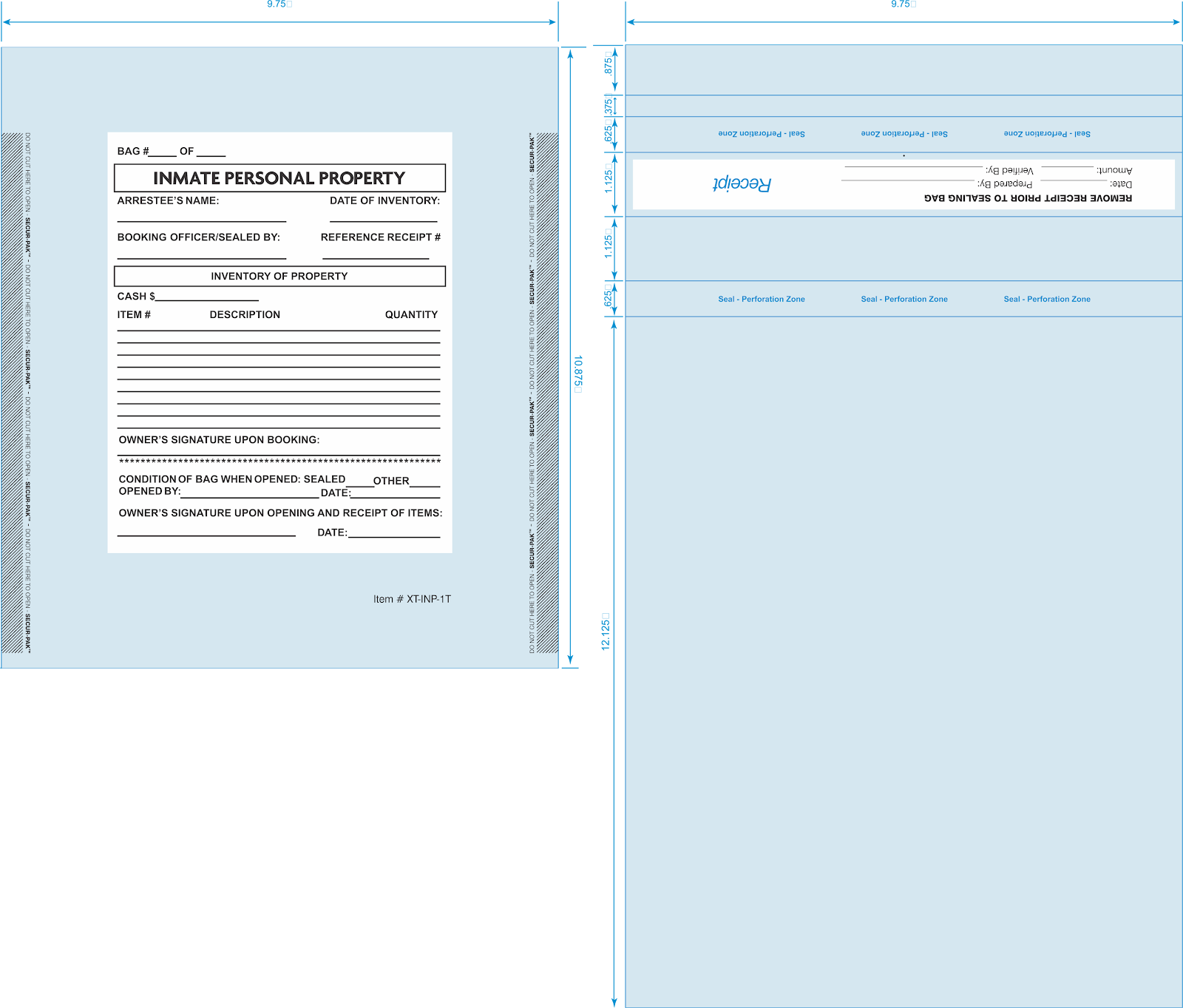
Cost-Effectiveness of High-Quality Inmate Property Bags: Investing in Long-Term Solutions
Correctional facilities are complex environments where operational efficiency, security, and cost management are critical. Among the many logistical challenges that facilities face is the need to effectively manage inmate property. Inmate property bags are a vital tool for storing, transporting, and securing personal belongings, but not all bags are created equal. High-quality inmate property bags may come at a higher upfront cost than lower-quality alternatives, but their durability, reliability, and long-term benefits make them a cost-effective investment in the long run. This article explores why investing in high-quality inmate property bags pays off and contributes to the overall efficiency and security of correctional facilities.
Durability Reduces Replacement Costs
The primary advantage of high-quality inmate property bags is their durability. Made from tough, tear-resistant materials like reinforced polyethylene or heavy-duty nylon, these bags are designed to withstand the rigors of daily use in a correctional setting. Inmates’ belongings often need to be transported, stored, and retrieved multiple times, which can take a toll on poorly made bags. Low-quality property bags, often made from thin plastic or poorly stitched fabric, tend to wear out quickly, leading to frequent replacements.
While the initial purchase price of high-quality property bags may be higher, their long lifespan significantly reduces the need for frequent replacements. Over time, this reduction in replacement costs offsets the initial investment, making high-quality bags more cost-effective. Facilities that use durable property bags can save on procurement costs, administrative expenses, and labor associated with continually ordering and distributing new bags.
Enhanced Security Reduces Risk and Liability
Security is paramount in any correctional facility, and the handling of inmate property is no exception. High-quality inmate property bags come with enhanced security features, such as tamper-evident seals, strong zippers, and reinforced closures. These features prevent unauthorized access to inmate property, reducing the risk of theft, contraband smuggling, and tampering.
In contrast, low-quality property bags often lack the necessary security measures, making it easier for inmates or staff to tamper with the contents undetected. The use of substandard bags increases the risk of security breaches, which can lead to serious consequences for both the facility and the individuals involved. By investing in high-quality property bags with built-in security features, facilities can mitigate these risks and avoid the costly repercussions of security incidents, including legal liabilities, investigations, and disruptions to operations.
Improved Efficiency in Property Management
High-quality inmate property bags are designed with features that enhance the overall efficiency of property management processes. Many bags are equipped with transparent windows or clear labeling sections, allowing correctional staff to quickly identify the contents without opening the bags. This feature is especially useful during inmate intake, transfers, and releases, as it speeds up the retrieval process and minimizes errors.
Additionally, the durability of high-quality bags means they are less likely to tear or break, reducing the time and effort needed to handle damaged bags or replace lost or compromised items. In the long term, the increased efficiency of property management translates into cost savings by streamlining workflows and reducing the administrative burden on correctional staff.
Building Trust and Reducing Disputes
A correctional facility’s ability to protect inmate property is a key factor in maintaining trust between inmates and staff. When inmates are confident that their belongings will be safely stored and returned to them intact, it contributes to a more stable and cooperative environment within the facility. High-quality property bags play a significant role in building this trust by ensuring that inmate property is securely managed.
Low-quality bags, on the other hand, are more likely to fail, resulting in lost, damaged, or stolen property. When these incidents occur, they can lead to disputes, grievances, and even legal action from inmates. The costs associated with resolving these disputes—including staff time, investigations, and potential legal fees—can far exceed the initial savings from using cheaper property bags. By investing in reliable, high-quality property bags, facilities can reduce the likelihood of property-related disputes and the associated costs.
Long-Term Value Over Short-Term Savings
While it may be tempting to opt for lower-priced inmate property bags to save on immediate expenses, this approach often results in higher costs over time. The constant need to replace low-quality bags, address security issues, and manage disputes can quickly erode any short-term savings. High-quality property bags, though more expensive upfront, offer long-term value by reducing replacement costs, enhancing security, improving operational efficiency, and minimizing the risk of disputes.
Investing in high-quality inmate property bags is a smart financial decision for correctional facilities seeking to manage their budgets responsibly while maintaining high standards of security and efficiency. These durable, reliable bags offer a return on investment that extends far beyond their purchase price, making them an essential component of a well-run facility.
Conclusion
Inmate property management is a critical function in correctional facilities, and the choice of property bags plays a significant role in ensuring security, efficiency, and cost-effectiveness. High-quality inmate property bags may come with a higher initial price tag, but their long-term benefits far outweigh the short-term savings of cheaper alternatives. By reducing replacement costs, enhancing security, improving operational efficiency, and fostering trust, these bags provide a cost-effective solution that supports the smooth operation of correctional facilities and protects both inmate property and the facility’s resources.
Comments are Closed